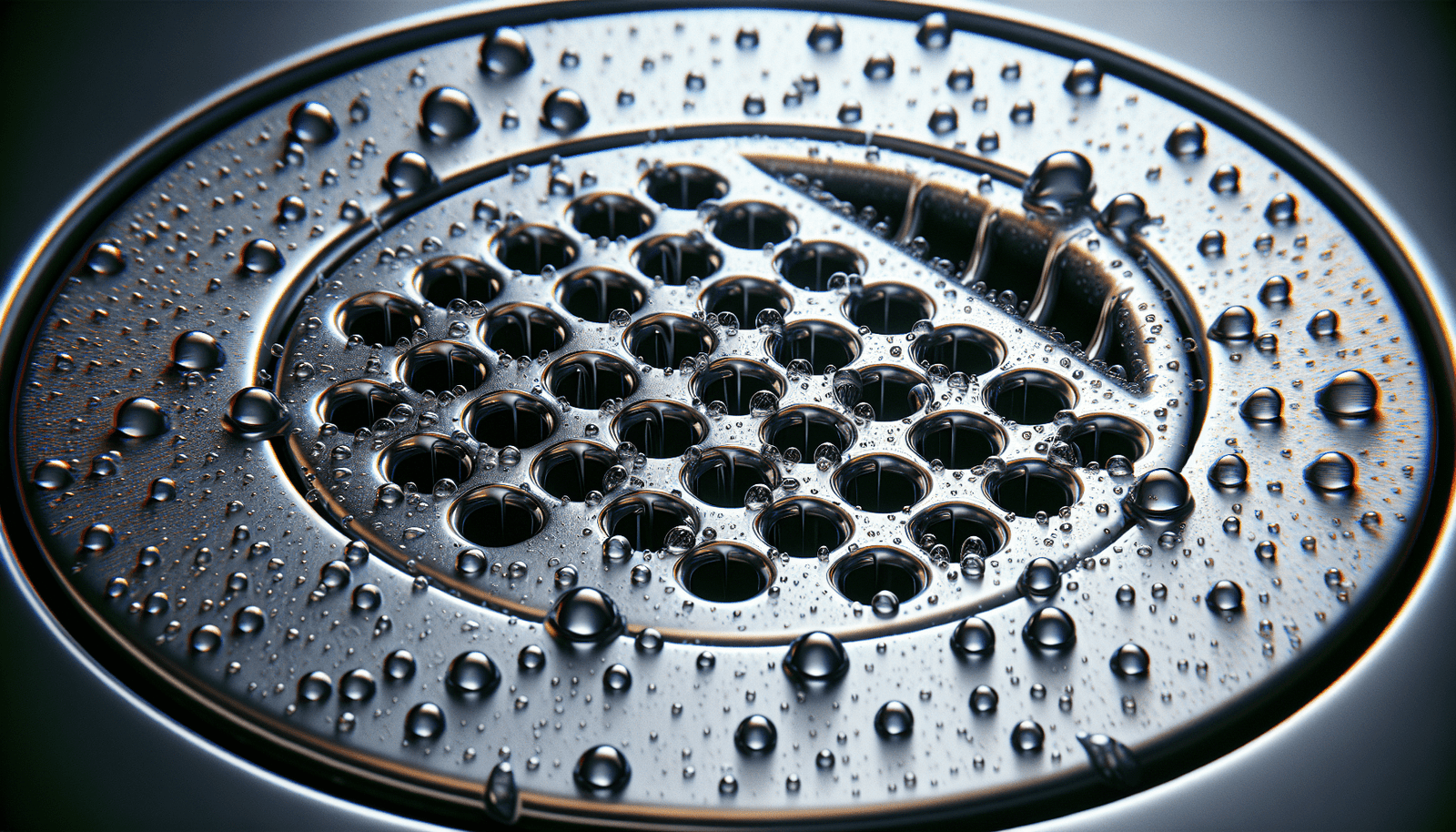In “How does a shower drain system work?,” you’ll delve into the fascinating mechanics behind one of the essentials of modern living. A shower drain system might seem straightforward, but it involves a well-coordinated blend of components working seamlessly to ensure proper water flow and prevent blockages. From the drain trap that keeps sewer gases at bay to the pipes that channel water away efficiently, you’ll gain a clear understanding of each part’s role. This article illuminates the journey water takes from your shower, highlighting the importance of regular maintenance to keep everything running smoothly. Have you ever wondered, “How does a shower drain system work?” If you have, you’re certainly not alone. Many homeowners may marvel at the efficiency of this seemingly mundane component of their bathroom, without fully understanding how it operates behind the scenes. Let’s take a deep dive into the inner workings of a shower drain system and explore its components, functionality, maintenance, and more.
Understanding the Basics of a Shower Drain System
A shower drain system is designed to efficiently remove wastewater from your shower, keeping your bathroom clean and dry. It may seem simple on the surface, but there’s more than meets the eye. The system involves various parts working together to ensure that water drains quickly and smoothly.
Components of a Shower Drain System
Several key components make up a typical shower drain system. Understanding each part helps you appreciate how they function as a whole.
| Component | Description |
|---|---|
| Drain Cover | The visible part that prevents large debris from entering the piping system. |
| Drain Body | The housing that sits below the drain cover and connects to the plumbing system. |
| Trap | A U-shaped pipe that holds a small amount of water to prevent sewer gases from escaping. |
| Drain Pipe | Piping that guides wastewater from the drain to the home’s sewer or septic system. |
| Vent | Prevents a vacuum effect and allows air to flow, ensuring smooth drainage. |
The Role of Gravity
Gravity plays a crucial role in the functioning of your shower drain system. When you shower, water flows downward due to gravity, moving through the drain cover, into the drain body, and then through the pipes until it reaches the sewer or septic system.
The Importance of Slope
For effective drainage, the shower floor should be slightly sloped towards the drain. This slope ensures that water doesn’t accumulate and instead quickly flows towards the drain opening.
The Drain Cover: Your First Line of Defense
The drain cover is the first visible component of your shower drain system. But it’s more than just a static piece of metal or plastic.
Functionality
The primary function of the drain cover is to prevent large debris, such as hair and soap scum, from entering the drain body and pipes. Blocking such debris can help avoid clogs, making your entire system more efficient.
Maintenance
Keeping the drain cover clean is essential for maintaining an efficient shower drain system. Regularly removing hair and other debris that accumulate on the cover can prevent blockages and prolong the lifespan of your plumbing.
The Drain Body: Connecting to the Main System
The drain body sits directly below the drain cover and acts as the gateway to your home’s more extensive plumbing network.
Installation Types
Different types of drain bodies are suited to various shower installations. Some common types include:
| Type | Description |
|---|---|
| Residential Drain | Typical for homes; usually connects to a standard 2-inch drain pipe. |
| Commercial Drain | Built for heavy usage; often larger and more durable. |
| Linear Drain | Elongated shape; popular in modern bathrooms for aesthetic and practical reasons. |
Connection to Piping
The drain body connects securely to the drain pipe that carries wastewater away from your shower. Proper installation is crucial here to ensure that no leaks occur, which could lead to water damage.
The Trap: Blocking Sewer Gases
Possibly the most fascinating part of your shower drain system is the trap, a U-shaped pipe that serves a vital function.
How It Works
The trap holds a small amount of water at all times. This water acts as a barrier, preventing sewer gases from escaping into your home through the drain. Without the trap, you’d likely encounter unpleasant odors in your bathroom.
Types of Traps
Various types of traps are commonly used in shower drain systems:
| Type | Description |
|---|---|
| P-Trap | The most common type; shaped like a “P” lying on its back. |
| S-Trap | Similar to a P-Trap but with a different orientation; used where a P-Trap can’t fit. |
| Bottle Trap | Compact design; often used in tight spaces. |
Maintenance
Keeping the trap free of debris is crucial for its proper functioning. Regularly running water through the shower will ensure the water barrier doesn’t evaporate, maintaining its effectiveness in blocking sewer gases.
Venting: Ensuring Smooth Drainage
Vents may not be visible, but they play a vital role in the functionality of your shower drain system.
Role in the System
The vent system allows air to enter the drain pipes, preventing a vacuum that can impede water flow. Without vents, you’d experience slow draining or even gurgling sounds as water struggles to flow through the system.
Types of Vent Systems
Different homes may have different types of vent systems:
| Type | Description |
|---|---|
| Individual Vents | Each fixture has its own vent. |
| Common Vents | A single vent serves multiple fixtures. |
| Air Admittance Valves | One-way valves that allow air in without requiring a traditional vent pipe. |
Maintenance
Venting systems are generally maintenance-free, but if you notice slow drainage or gurgling sounds, it could indicate a venting issue, necessitating a check by a professional plumber.
Drain Pipes: The Pathway to Wastewater Removal
The drain pipes are the unsung heroes of your shower drain system.
Pipe Materials
Understanding what materials are commonly used can help you understand their durability and potential maintenance needs:
| Material | Pros | Cons |
|---|---|---|
| PVC | Lightweight, inexpensive, easy to install | Can become brittle over time. |
| ABS | More durable than PVC, easier to install | More expensive, can deform in sunlight. |
| Cast Iron | Extremely durable, sound-deadening | Heavy, difficult to install, costly. |
Sizing and Slope
The size and slope of your drain pipes also matter. Most residential shower drains use a 2-inch pipe. The proper slope, usually 1/4 inch per foot, ensures that water flows smoothly without pooling or causing blockages.
Common Issues
Regular inspections can help identify common issues like cracks, blockages, or tree root intrusions that may affect the efficiency of your drain pipes.
Maintaining Your Shower Drain System
You now have a good understanding of how each component of the shower drain system works. But maintaining this system is just as important.
Regular Cleaning
Regularly clean your drain cover and pour hot water down the drain to dislodge any soap scum or minor blockages. Using a drain snake can help remove hair and other stubborn debris.
Avoiding Blockages
Being mindful of what goes down your drain can make a significant difference. Avoid letting hair accumulate and never pour oily substances down the drain as they can solidify and cause blockages.
Use of Drain Cleaners
Liquid drain cleaners can be handy but should be used sparingly. Overuse can damage your pipes, especially if they are made of PVC or other susceptible materials.
Professional Inspections
Even with regular maintenance, professional inspections can identify issues that a homeowner might miss. A licensed plumber can perform a thorough check and recommend any necessary repairs or upgrades.
Upgrading Your Shower Drain System
If your shower drain system is old or giving you constant trouble, it might be time to consider an upgrade.
Modern Shower Drains
Modern shower drain systems often incorporate stylish drain covers, efficient traps, and advanced venting mechanisms. Linear drains, for example, provide a sleek, modern look and are highly efficient.
Benefits of Upgrading
Upgrading your shower drain system can offer several advantages:
- Increased Efficiency: Modern systems drain water faster.
- Aesthetics: Improved appearance of your shower.
- Reduced Maintenance: Newer systems are less prone to clogging.
Costs and Considerations
Budgeting is essential when considering an upgrade. Costs can vary widely based on materials, complexity, and labor. Consult with a professional to get a detailed estimate.
Troubleshooting Common Shower Drain Issues
Understanding how to troubleshoot common issues can save you time and money.
Slow Draining
This is often caused by a partial blockage. Try using a plunger or a drain snake to clear the obstruction. If the problem persists, it may indicate a more severe blockage deeper in the system.
Unpleasant Odors
Unpleasant odors can usually be traced back to an empty trap. Running water in the shower can refill the trap and block sewer gases.
Water Backing Up
Water backing up into the shower is usually a sign of a serious blockage. In this case, call a professional plumber immediately to assess and resolve the issue.
Gurgling Sounds
Gurgling sounds generally indicate a venting issue. Ensuring your vent system is functioning correctly can resolve this problem.
When to Call a Professional
It’s always a good idea to know when a problem is beyond a DIY fix. If you encounter persistent issues, suspect a leak, or need to upgrade, don’t hesitate to call a professional plumber.
How to Choose a Plumber
Selecting the right plumber is crucial. Look for licensed professionals with good reviews and reasonable rates. Request estimates and inquire about warranties on their work.
Conclusion
At this point, you should have a comprehensive understanding of how a shower drain system works. From the visible drain cover to the hidden piping and venting systems, each component plays a crucial role in ensuring efficient drainage. Regular maintenance and timely upgrades can keep your shower drain system running smoothly for years to come.
So next time you step into your shower and see the water disappearing down the drain, you’ll know exactly what’s happening behind the scenes. If you ever face issues or consider upgrades, you’ll be well-prepared to make informed decisions.

